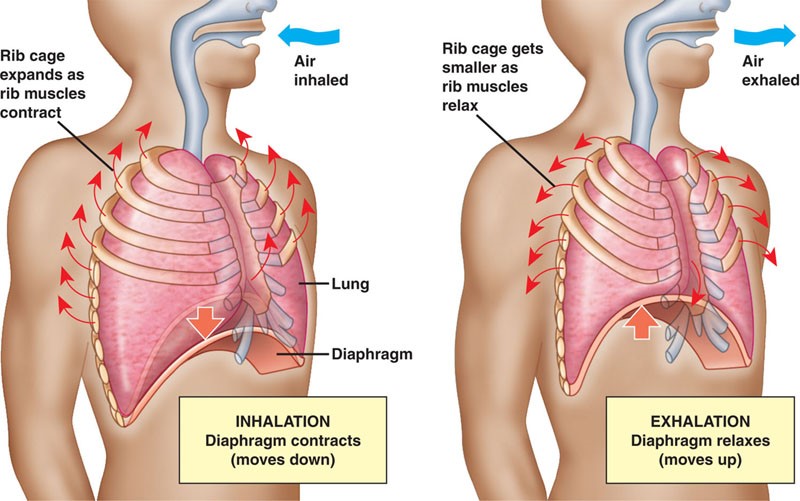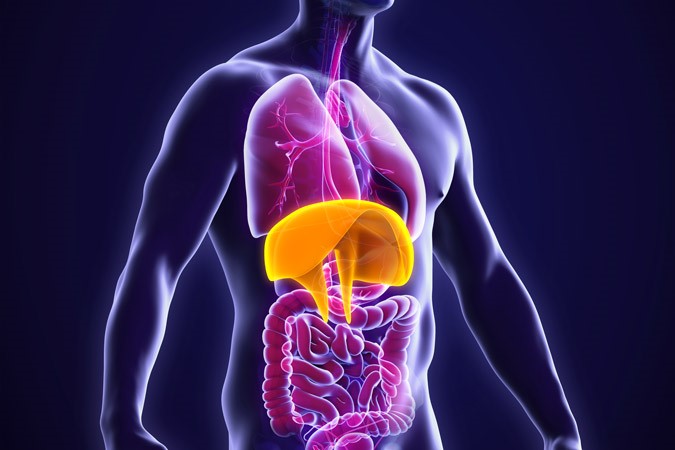The diaphragm, breathe and balance
The Diaphragm is your principal respiratory muscle. Without it your body cannot breathe : that’s how essential this anatomical element is for your life. But do you use it properly ?
Breathing is the first and last step of life.
This article aims to give you some tips and information about your respiratory muscle. As a matter of fact, if you know it better, you can use it better.
Diaphragm localization
The Diaphragm is a thin tendinous muscle structure with two domes that give it a parachute shape. Located in a thoracic cage, it inserts on the ribs and the lumbar vertebrae. It separates the thorax from the abdomen.
Above it are the lungs, one for each side and between them the heart. Under the domes we find the liver on the right, the stomach on the left and all the digestive organs contained in the peritoneal bag.
Who does it work ?
When you inhale deeply, the diaphragm goes downwards, the ribs diameter increases, the thoracic cage opens and the abdomen expands. Inhalation is an active usual movement.
When you exhale deeply the diaphragm goes upwards inside the thoracic cage, the ribs diameter decreases and the abdomen relax. Exhalation is a passive usual movement.
We don’t need to think to breathe, the brain does it by itself for you. But you can regulate your breath. That’s why we need to take care of it and take time to breathe deeply.

Why is it ESSENTIAL ?
The diaphragm movement has a role within a cardio-respiratory system. It brings air in your lungs where the process of gas exchange takes place between the air and the blood. It also works with the digestive system. It increases the abdominal pressure and acts as a massage for the digestive tube and the visceral organs, thus improving the digestion and reinforcing the immune system.
Moreover, the diaphragm’s connections with the central parts of the body have an impact on the posture and may be at the origin of some back pains.
On top of that, we know it plays a role when it comes to stress and emotions management. When you unconsciously block your diaphragm, you block your emotion too, and your stress increases. The expressions « I have a lump in my throat » or « my stomach is in knots » are quite revealing. Most of the time they indicate some consequences of tensions at the thoracic cage level or a wrong breathing. It is this kind of mechanical chain of reactions that your osteopath will address, within a global treatment.
To conclude
If you want to impress your colleagues with science facts at coffee break: we breathe about 20,000 times per day. In other words, we use our diaphragm 20,000 times per day. Like any mechanical system, like a music instrument for instance, when you play a lot, sometimes it goes out of tune. Singers and yoga teachers know that.
Therefore on your osteopath’s checklist when looking at your overall body balance, the mobility of your diaphragm is an important element. Sometimes we need to tune it properly to find the right balance.
Now if there is only one thing to take away from this and keep in mind in your everyday life : to live a healthy life, it is essential to breathe properly and relax your diaphragm.
About the author
Arnaud is a senior French osteopath who graduated from Sutherland Osteopathic College in 2007 after 6 years full time studies. In the same year, he graduated from the Medical University “Rene Descartes Paris V“ and certified in anatomy clinic to teach the human body anatomy.
Learn more about Arnaud




